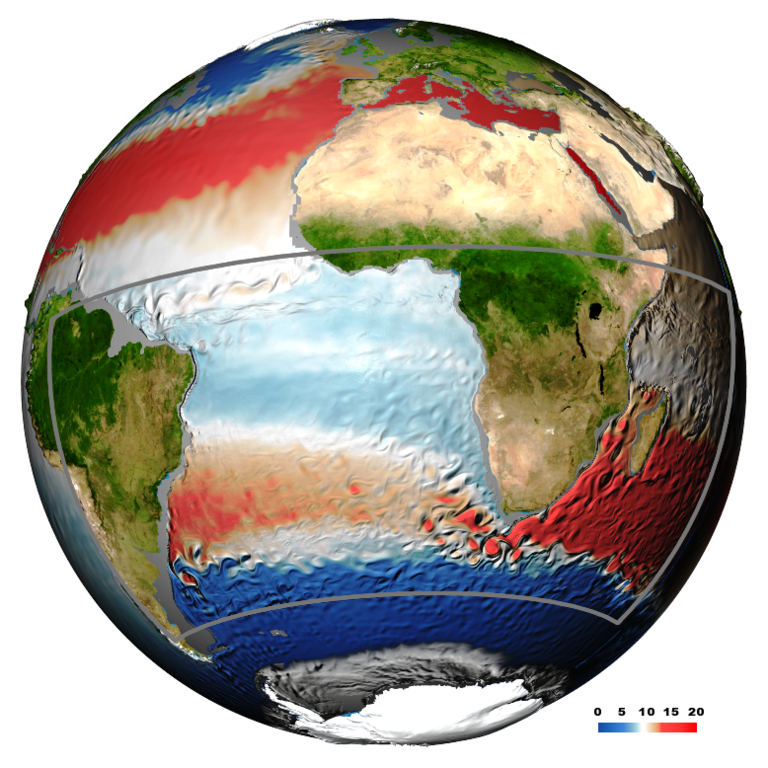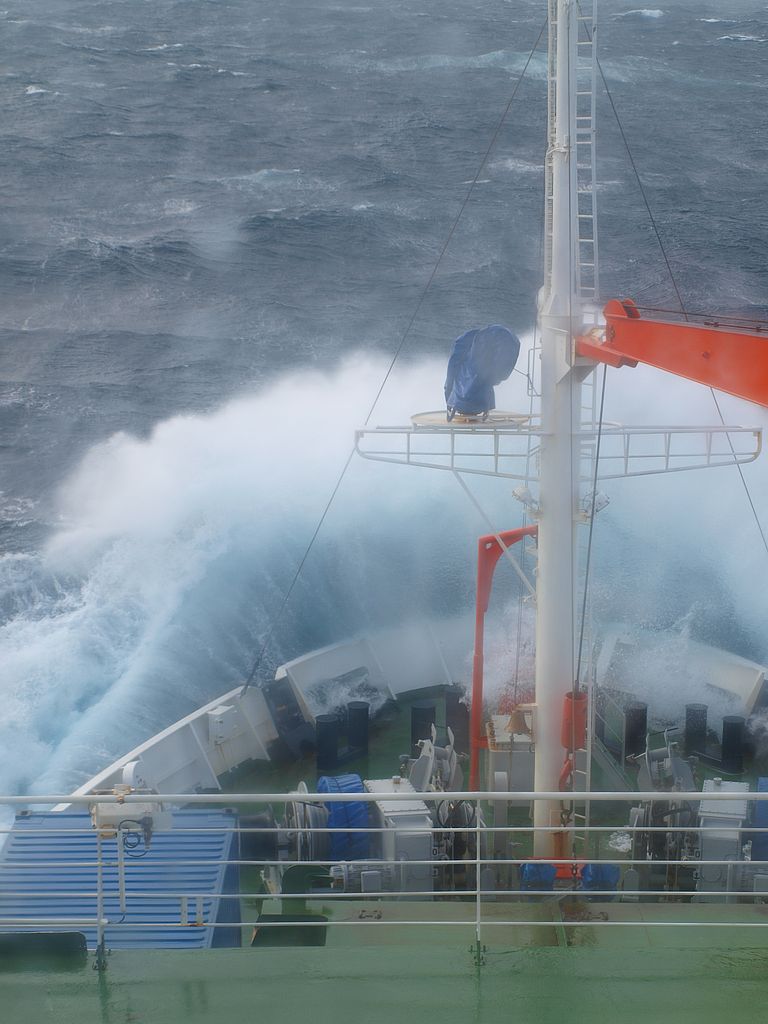The flow of water around the Cape of Good Hope
Ocean currents in a key region reconstructed
Similar to a global conveyor belt, heat energy is transported by major ocean currents throughout all of the world's oceans. A portion of this circulation, the Gulf Stream system, for example, provides the relatively mild climate to northern Europe. However, the details of the conveyor belt indicate that it is not a uniformly operating system. Instead, it consists of many individual components that are subject to constant fluctuations which are related in many different ways. One of the key areas is the southern tip of Africa, where the Agulhas Current from the Indian Ocean meets the Atlantic Ocean. Oceanographers at GEOMAR Helmholtz Centre for Ocean Research Kiel, together with colleagues from the USA and Great Britain, were now – for the first time – able to reconstruct the behavior of this current system since 1870. "Such long-term studies are important to distinguish human-induced changes in ocean currents from natural variation," says Prof. Dr. Arne Biastoch from GEOMAR. He is lead author of the study which now appears in the international journal Nature Communications.
The Agulhas Current is one of the world's most powerful ocean currents. Each second it transports up to 70 million cubic meters of warm, saline water southward along the southern African coast in the Indian Ocean. "That's a tremendous amount. By comparison, all the rivers in the world carry along only one million cubic meters of water per second," explains Professor Biastoch. South of Africa, the flow then abruptly turns and retroflects back into the Indian Ocean. Some portion of the water masses, however, separates from the main stream and forms huge vortices which drift westward into the Atlantic. "We call these vortices ‘Agulhas Ring’ or ‘Agulhas leakage’. These eddies have diameters of up to 200 kilometers and reach down to more than 1000 m depth. In previous studies we were able to demonstrate that they are an important source of warm, salty water in the Atlantic," the oceanographer explains.
Since the Agulhas current system is highly dynamic and these eddies are not a permanent feature, any in-situ measurements are extremely difficult. "No long time series of data exist for either the Agulhas or the Agulhas Rings", says Dr. Jonathan Durgadoo, co-author of the study. In order to still be able to take a look at the history of the Agulhas Current and its rings, the experts involved have now combined simulations of the ocean and the atmosphere of several computer models with existing measurements. Oceanographer Durgadoo adds: "Our most complete records are sea surface temperatures; they have been measured since the 19th century - first using buckets lowered from ships, now satellite data". For the computer simulations, the team went back to high-resolution models. "The computational effort of these modern models is so high that even the most powerful supercomputers, including those in Kiel and Stuttgart, run for several months," says Dr. Durgadoo.
All models showed a similar relationship between sea surface temperatures and the amount of warm water that enters the Atlantic via the Agulhas Rings. The long reconstruction also showed that the transport of watermasses into the Atlantic is affected by the wind systems over the Southern Ocean. "From other studies, we already know that these systems could be modified with climate change. This would then impact the supply of warm, salty water into the Atlantic, and ultimately into the Gulf Stream system," says Arne Biastoch. Future studies are needed to demonstrate the influence these variations may have on the strength of the global conveyor belt. "This is a computational problem that – once again – we can only solve with the help of supercomputers," says Professor Biastoch.
Original publication:
Biastoch, A., J. V. Durgadoo, A. K. Morrison, E van Sebille, W. Weijer, S. M. Griffies (2015): Atlantic Multi-decadal Oscillation covaries with Agulhas leakage. Nature Communications, https://dx.doi.org/10.1038/ncomms10082
Contact:
Dr. Andreas Villwock (GEOMAR, Communication & Media),
Phone: +49 431/600-2802, presse(at)geomar.de




